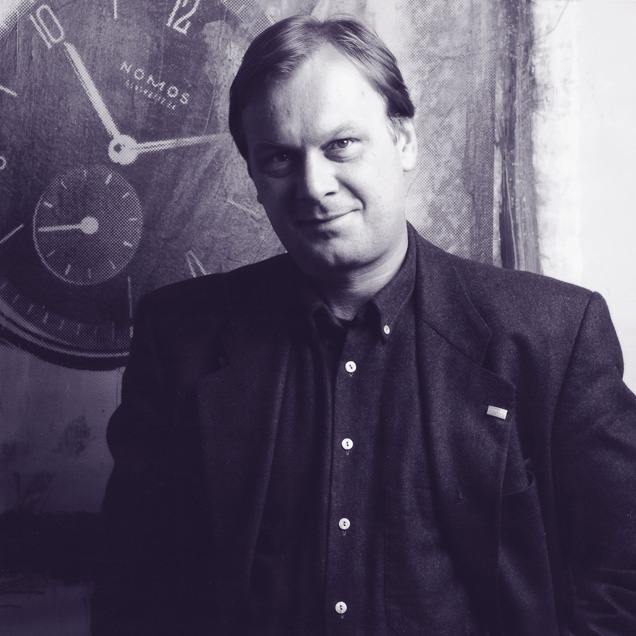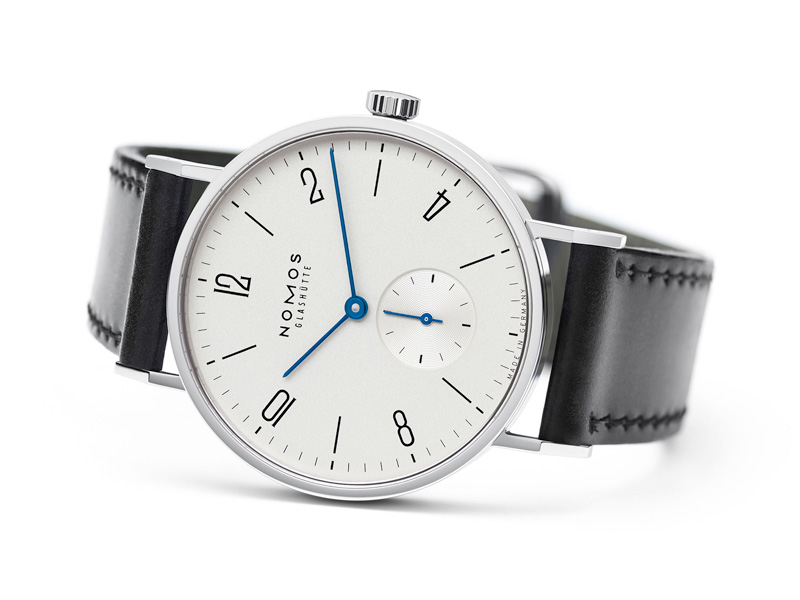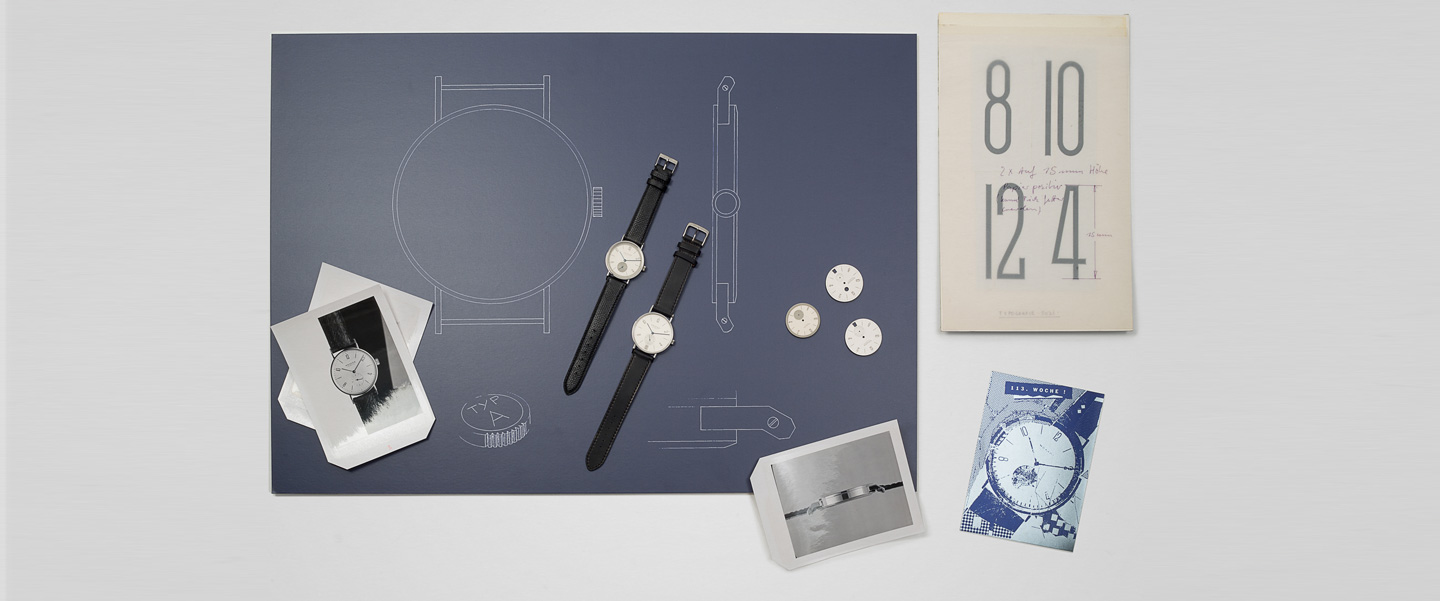In a sense it seems obvious to design a watch around Bauhaus principles. As its central axiom, the Bauhaus movement attempted a unification of individual artistic vision with principles of mass production and everyday function. Think of it this way, any object designed under Bauhaus principles should look aesthetically complete but equally functional in its form. Also known as the International Style, it was characterised by the absence of ornamentation and the harmony between the purpose of an object or a building and its design.
Formed in Germany just after WWI by initiative of architect Walter Gropius and with the participation of international names like Alvar Aalto, Ludwig Mies van der Rohe, Le Corbusier and Frank Lloyd Wright, the Bauhaus School became a major influence not only on modernist architecture but also on the design and function of many everyday objects, wrist watches included. A central part of the curriculum for the Bauhaus School was to unify art, craft and technology. Despite its short existence (from 1919 until 1933 when it was disbanded because of the Nazi Party’s rise to power), it continues to influence design acumen in modern form.
Wind the clock forward (pun intended) to the fall of the Berlin Wall (1990), two months after Roland Schwertner founded Nomos Glashutte S.A. specialising in mechanical watches. The first collection and the blueprint for their design was drawn up by Susanne Günther, who was influenced by the Bauhaus purist style. Ever since, Nomos watches have been known for their clean and modernist aesthetic.
Less is more
– Roland Schwertner

Furthermore, Nomos are also a member of the Deutscher Werkbund: a German association of artists, architects, designers, and industrialists. Like the Bauhaus School, although not as famous, the Werkbund became an important element in the development of modern architecture and industrial design. Its initial purpose and still arguably something the modern watchmaking industry strives for, was to establish a partnership of product manufacturers with design professionals in an effort to integrate traditional crafts and industrial mass production techniques. It was founded in 1907, to put Germany on a competitive footing with England and the United States.
With Bauhaus principles influencing the way designers thought about everyday objects, the Werkbund came to be regarded as the authoritative body on questions of design in Germany. The nexus of the two institutions raised fundamental questions of craftsmanship versus mass production, the relationship of usefulness and beauty, the utilitarian purpose of formal beauty in a commonplace object, and whether or not a single proper form for something could exist. All of which is displayed in the functional, yet elegant designs of Nomos watches.

There is nothing superfluous or ornate about their dials or movements: The numerals or markers are elegantly spaced out; complications, such as a world time are included in an erudite and functional manner; the time can be read quickly because of the legibility of the hands and the dial layout. Equally, the watch mechanism contains no embellishment other than what is needed to fulfil its purpose. Movement decoration, seen by most in the watchmaking business as a way to enhance the mechanism, is at Nomos a practical requirement to help ensure longevity and precision in timekeeping.
Following the Bauhaus style and the clean legible dials, Nomos produce a whole range of mechanical watches, from a world time to a mechanical time only watch. Their most recent timepieces are archetypal examples of their range and philosophy in design, taking four of their watch ranges and producing midnight blue dials, white gold numerals or markers, and offset with a vibrant red second hand. The independent company produces all of its movements in-house and can boast that it is currently Germany’s largest manufacturer of mechanical watches by volume. It might be minimalist in approach, but it is a company that just gets the details right.

The Tangente is a near perfect expression of Nomos design axioms demonstrating the Bauhaus philosophy. Every part of the watch is in proportion, from the diameter of the case to the length of the hands and the spacing of the numbers and markers. The dial comes in a number of different colours, including a peerless white and a beautiful shade of midnight blue. The combination of parred down design and function underscores minimalist impression of the watch while giving it a unique elegance rooted in historical Bauhaus graphic design. If the dial and overall look of the watch appear to have a vintage aesthetic, there is good reason for it: the style and typography for the Bauhaus design in watches predates Nomos.
In the 1930s, watch models from a variety of German brands had virtually identical dials. Watchmaking was different at that time; brand identity was rare. Dial making was a specialised trade and most manufacturers bought them from the same firm. The design of dial that now appears on the Tangente was produced by the German company Weber & Baral in Pforzheim in the 1930s in an almost identical form, which found use at the time in German watch firms A. Lange & Söhne in Glashütte and Stowa in the Black Forest.
What separates Nomos from other high-end watch manufacturers is not only their no-nonsense Bauhaus influenced design acumen, but the application of the same philosophy to their pricing. Their watches represent some of the best value for money on the haute horlogerie market. They are functional, ergonomic and beautifully presented. And because of the Bauhaus influence, essentially timeless, with none of the vagaries of fashion. They represent a tried and known formula in how to manufacture a watch that tells the time, is functional and will look good now and in the years to come.














Show Comments +